by Beth Finke
 Just got back from a trip to Washington, DC. While walking around with friends there, I couldn’t help but notice how nice the streets and sidewalks in DC and nearby Alexandria are — guess I’ve become too accustomed to the cracks and potholes and construction cut-outs here in Chicago!
Just got back from a trip to Washington, DC. While walking around with friends there, I couldn’t help but notice how nice the streets and sidewalks in DC and nearby Alexandria are — guess I’ve become too accustomed to the cracks and potholes and construction cut-outs here in Chicago!
Turns out I’m not the only one to notice such things — a new list of the top ten American cities for accessibility ranks Washington DC #1. Redfin.com offers a custom search filter on its site that allows users to locate accessible homes for sale in their communities, and by combining results from the search filter with additional city data, they put together this list of what they regard as America’s top 10 most accessible cities.
10. Baltimore, Maryland
Number of Accessible Listings in 2017: 17,067
Median Home Sale Price: $171,000
Percentage of People Living with a Disability: 11.9%
Easily accessible transit options, including a subway service and buses, are available in many Baltimore locations to connect residents to the airport, Johns Hopkins Hospital and Washington, D.C. The city’s Inner Harbor area, where you’ll find restaurants and other attractions, is exceptionally well designed when it comes to accessibility.
9. San Antonio, Texas
Number of Accessible Listings in 2017: 5,267
Median Home Sale Price: $231,990
Percentage of People Living with a Disability: 10.4%
With wide sidewalks and many ADA-compliant attractions, such as San Antonio’s River Walk, the Alamo and several historical attractions, San Antonio is Texas’s most accessible city. The city’s bus service, VIA, offers discounted fares and priority seating for people with disabilities, making public transit easy to navigate and use. The San Antonio Museum of Art, Botanical Garden and Missions National Historic Park are only a handful of accessible attractions in the city; there are several disability-friendly parks and recreation areas in and around town, as well.
8. Atlanta, Georgia
Accessible Homes Listings in 2017: 3,855
Median Home Sale Price: $266,000
Percentage of People Living with a Disability: 8.6%
Atlanta, known for its grand old manor homes and several ADA-compliant attractions, such as the Georgia Aquarium, the Atlanta Zoo and the College Football Hall of Fame, is one of the most accessible cities in the nation. The city’s major transportation system, MARTA, is easily accessible.
7. Vancouver, Washington
Number of Accessible Listings in 2017: 3,024
Median Home Sale Price: $300,000
Percentage of People Living with a Disability: 10.5%
Vancouver is home to more than 450 acres of parks, trails and open space, most of which is ADA-compliant (the only exception is space that’s designed to preserve natural terrain). Many accessible hikes and outdoor attractions are available, including sightseeing at Captain William Clark Park Trail and the Columbia River Waterfront Renaissance Trail.
6. San Jose, California
Number of Accessible Listings in 2017: 659
Median Home Sale Price: $780,000
Percentage of People Living with a Disability: 5.0%
Seasonably warm and surrounded by the Diablo and Santa Cruz Mountains in the heart of the Santa Clara Valley, San Jose is one of the most accessible cities on the West Coast. Featuring a booming high-tech industry and serving as a cultural hub for central California, it’s home to several notable ADA-compliant attractions, such as the Sunol Regional Wilderness and the beautiful Cathedral Basilica of St. Joseph. The Municipal Rose Garden, Happy Hollow Park and Zoo and several local businesses all over the city are also disability-friendly.
5. Tucson, Arizona
Number of Accessible Listings in 2017: 7,699
Median Home Sale Price: $210,000
Percentage of People Living with a Disability: 10.9%
Tucson, home to the University of Arizona, is a flat-terrain city and sits between several mountain ranges. It has an accessible bus service: Sun Tran. Tucson attracts visitors to several ADA-friendly attractions, including the famed Mt. Lemmon, the Pima Air and Space Museum and the Tucson Museum of Art.
4. Portland, Oregon
Number of Accessible Listings in 2017: 5,500
Median Home Sale Price: $370,000
Percentage of People Living with a Disability: 9.7%
As one of the most ADA-compliant cities on the West Coast, Portland is home to Pioneer Square, the Harborwalk and so much more – and most locations are easy to navigate. TriMet service runs through Portland and its suburbs while offering reduced fares for seniors and those with disabilities under its Honored Citizen program. Beautiful public parks and green spaces dot the city, and each is accessible and easy to navigate.
3. Tampa, Florida
Number of Accessible Listings in 2017: 876
Median Home Sale Price: $265,000
Percentage of People Living with a Disability: 8.9%
The shores of Tampa Bay are known for pristine beauty, and the city itself is steeped in history; those factors, plus its warm, tropical climate make it a desirable location. However, Tampa is also known for its disability-friendly atmosphere, with wide sidewalks over flat terrain, accessible public parks and attractions, and the Sunshine Line – door-to-door transportation and bus passes for the elderly and people with disabilities. The Florida Aquarium, ZooTampa at Lowry Park and Busch Gardens are all ADA-compliant, and those are only a few of the notable (and accessible) attractions in the city.
2. Salt Lake City, Utah
Number of Accessible Listings in 2017: 1,261
Median Home Sale Price: $265,500
Percentage of People Living with a Disability: 7.5%
Salt Lake City, famed for its high quality of life (thanks in part to the convenient and historic downtown area and breathtaking views of the Wasatch and Oquirrh Mountains), is close to Great Salt Lake and home to nationally renowned, ADA-compliant recreational areas and charming city parks. Ranking just behind the D.C. metro area on accessible, quality healthcare, The Crossroads of the West is also well-outfitted with curb ramps and offers free parking at city meters for people with disabilities who have a windshield placard or specialized license plate. Salt Lake City is also home to several accessible attractions, including the Salt Lake Temple, Hogle Zoo and Antelope Island State Park, where you can see free-roaming bison grazing in the valleys.
1. Metro D.C. (Alexandria, the District of Columbia, and Arlington)
Number of Accessible Listings in 2017: 10,634
Median Home Sale Price: $580,000
Percentage of People Living with a Disability: 6.7%
Metro D.C., which includes the nearby cities of Alexandria and Arlington, is the most accessible metropolitan area in the nation. The Washington, D.C. subway system also runs through Alexandria and Arlington, and each city has its own bus system; the city of Alexandria is home to GO Alex, a public transit service specifically designed for people with mobility issues. The metro area is packed with community recreational programs designed for people with disabilities, and all federal buildings are ADA-accessible. With wide sidewalks that are easy to navigate, ample access to high-quality healthcare and a number of ADA-compliant attractions, parks and businesses, this metro area has earned the #1 spot on this list.
Information on the methodology used to assemble this list is available at redfin.com.







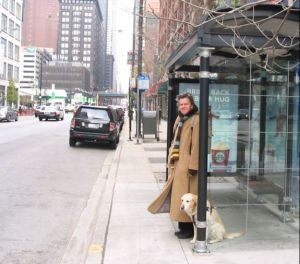 A small dog yipped and lunged at my Seeing Eye dog Whitney as we checked in for a flight at Chicago’s Midway Airport last month. No one got hurt, but it was alarming.
A small dog yipped and lunged at my Seeing Eye dog Whitney as we checked in for a flight at Chicago’s Midway Airport last month. No one got hurt, but it was alarming. Just got back from a trip to Washington, DC. While walking around with friends there, I couldn’t help but notice how nice the streets and sidewalks in DC and nearby Alexandria are — guess I’ve become too accustomed to the cracks and potholes and construction cut-outs here in Chicago!
Just got back from a trip to Washington, DC. While walking around with friends there, I couldn’t help but notice how nice the streets and sidewalks in DC and nearby Alexandria are — guess I’ve become too accustomed to the cracks and potholes and construction cut-outs here in Chicago!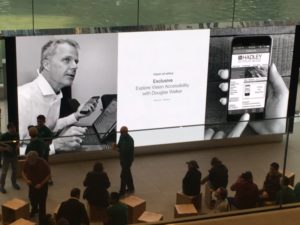
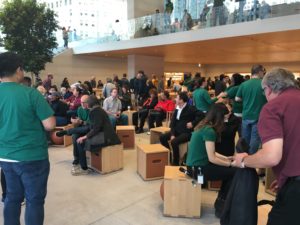
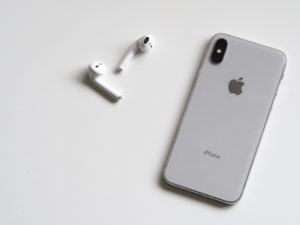 Before I had an iPhone, I had a Samsung Jack. It’s been six years since I had that old phone, but I can vaguely remember the layout — it looked like a Blackberry. The speech software for the Samsung Jack was called Mobile Speak, and it didn’t come with the device. We had to download it separately.
Before I had an iPhone, I had a Samsung Jack. It’s been six years since I had that old phone, but I can vaguely remember the layout — it looked like a Blackberry. The speech software for the Samsung Jack was called Mobile Speak, and it didn’t come with the device. We had to download it separately.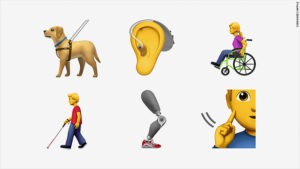
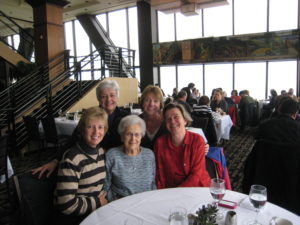
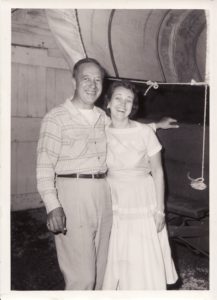

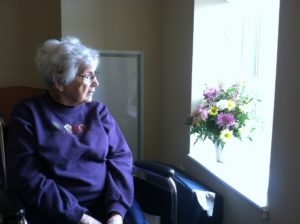
 With all the hubbub the past couple weeks about our Illinois Senator Tammy Duckworth (pictured right) casting a vote on the Senate floor with her newborn baby in her arms, very little attention was given to the fact that Senator Duckworth is a mother who has a disability.
With all the hubbub the past couple weeks about our Illinois Senator Tammy Duckworth (pictured right) casting a vote on the Senate floor with her newborn baby in her arms, very little attention was given to the fact that Senator Duckworth is a mother who has a disability.